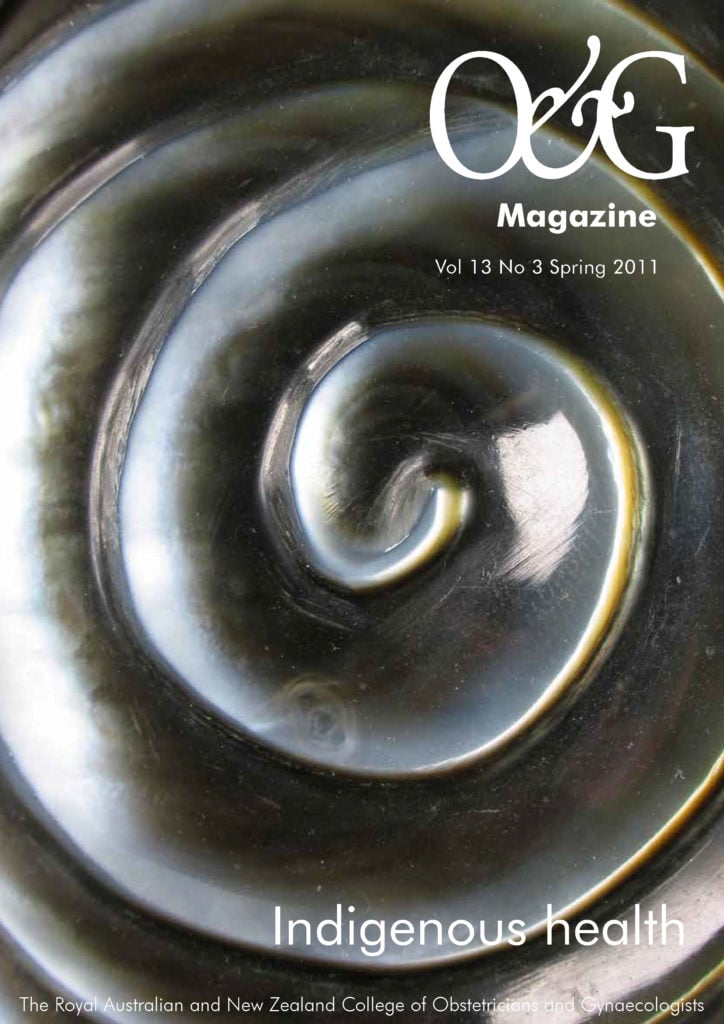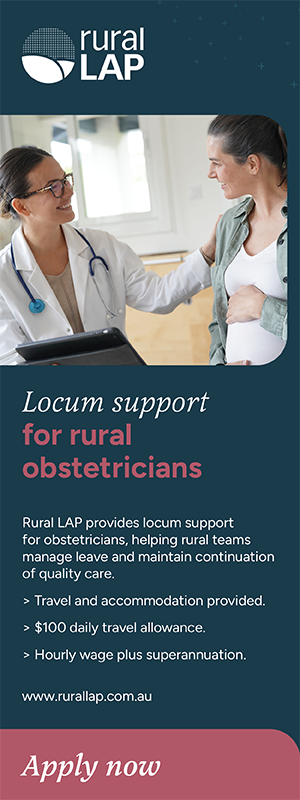Problems faced by Indigenous babies are no different from those faced by non-Indigenous babies. However, in keeping with the health profiles of Indigenous people in Australia, most of these problems occur more frequently in Indigenous babies.
Common problems encountered in the neonatal period are prematurity, low birthweight (LBW), asphyxia, infections, problems seen in infants of diabetic mothers and congenital anomalies of the heart, gut and kidney, all of which may affect the very survival of the newborn baby.
Indigenous babies account for five per cent of all births in Australia (15,800 of 295,700 in 2009), with four per cent being born to Indigenous mothers. The proportion of Indigenous births by State is as follows: Victoria one per cent, Queensland 6.1 per cent, NSW 2.8 per cent and the Northern Territory 36 per cent.1
The main reasons babies require admission to special care nurseries are those related to problems associated with prematurity and LBW. Problems connected to LBW include: feeding difficulties, jaundice, growth and long-term risks of adult chronic diseases such as heart disease, renal disease and diabetes mellitus. Premature babies may need ventilation, owing to hyaline membrane disease, and require specialised care to maintain temperature and provide nutrition. Complications associated with prematurity are retinopathy of prematurity, intraventricular haemorrhage and chronic lung disease, which have a significant impact on quality of life. The lower the birthweight and the smaller the gestational age, the worse the prognosis.
Perinatal mortality (sum of fetal and neonatal deaths per 1000 total births) of Indigenous babies continues to be higher than that of the wider population. National data puts these rates at 1.4 times the non-Indigenous rate in Western Australia, 1.2 times in South Australia and 2.1 times in the Northern Territory for 2003–05.2 Northern Territory data report perinatal mortality of 31 in Indigenous babies compared to 23 in non-Indigenous babies in 2001–05.3 There have been significant improvements in perinatal mortality over the last few decades, with the rates decreasing from a high of 44 per 1000 births in 1986–1990.
Preterm birth (before 37 completed weeks of gestation) is associated with a higher risk of neonatal problems that cause significant morbidity and mortality in newborn babies. Preterm births were classified according to the criteria of the WHO into groups of 20–27 weeks, 28–31 weeks and 32–36 weeks. Of all babies born in 2008, 8.2 per cent were preterm, with most of the preterm births occurring at a gestational age of 32–36 completed weeks. In 2008, 13.3 per cent of babies of Aboriginal and Torres Strait Islander mothers were born preterm, a proportion greater than eight per cent preterm rate of babies born to non-Indigenous mothers.4 However, this proportion varies markedly across the country. The Northern Territory had the highest proportion of preterm births, at 9.8 per cent of all births, and New South Wales had the lowest, at 7.5 per cent of all births. In the Northern Territory up to 15 per cent of Indigenous live born babies are preterm, and this is similar to the pattern seen over the last three decades.1
A baby’s birthweight is a key indicator of health status. Babies are defined as LBW if their weight at birth is less than 2500g. Within this category, those weighing less than 1500g are defined as very low birthweight and those less than 1000g as extremely low birthweight.5 LBW babies have a greater risk of poor health and dying, require a longer period of hospitalisation after birth and are more likely to develop significant disabilities.6 A baby may be small due to being born early (preterm), or may be small for its gestational age (intrauterine growth retardation). Some factors contributing to LBW include socioeconomic status, size of parents, age of mother, number of babies previously born, mother’s nutritional status, smoking and alcohol intake, and illness during pregnancy.7
The average birthweight of live born Indigenous babies in 2008 was 3196 grams, 189 grams lighter than the average of 3385 grams for live born babies of non-Indigenous mothers.4 The proportion of LBW Indigenous babies was 12.3 per cent, twice that of non-Indigenous babies (5.9 per cent). The proportion of Indigenous live born babies born with LBW declined slightly over time, but not significantly.1
The Aboriginal Birth Cohort study, a prospective longitudinal study that is now in its 26th year, has detailed information on Indigenous mothers and babies. The participant mother-baby pairs were recruited at the Royal Darwin Hospital, which is the main hospital for the Top End of the Northern Territory, from 1987–90. Of the 686 babies that form the cohort, ten per cent were preterm, 18 per cent LBW and 24 per cent had intrauterine growth restriction (IUGR). IUGR is defined as a birthweight for gestational age that is less than the tenth centile on the growth curve and is a better decimator of the adequacy of intrauterine growth than LBW, which is an arbitrary cutoff below 2500 grams.8 The three main factors associated with LBW in this cohort were young maternal age, low maternal BMI and antenatal smoking, all of which are amenable to change. At the last follow-up of this cohort (2006–08), a third of the female participants had already had a child.9 Of major concern is that the rates of smoking had increased from 56 per cent reported by mothers of the cohort to 63 per cent of the cohort who had had babies. Cessation of smoking during pregnancy is extremely rare.
These rates are comparable to reported rates from the Midwives Data Collection in the Northern Territory.1 In addition, 47 per cent of the participants who had babies had BMI <18.5 kg/m2. Alcohol use, both during pregnancy and otherwise, had also increased over the years. However, in this cohort we did not find an association of antenatal alcohol consumption with either prematurity or LBW.
Infants of diabetic mothers (including gestational diabetes) are increasing owing to the increasing rates of obesity and diabetes in the population. For a number of reasons these infants have higher morbidity and mortality.10 Problems occur at delivery mainly due to the large size of the babies. Obstructed labour, in particular shoulder dystocia, is a major concern. Prematurity is common, often because of medical intervention. These infants have immediate problems with low sugars owing to the continued high insulin levels while the nutrient supply is turned off with the removal of the placental circulation. There are higher rates of congenital anomalies, some of which are life threatening.
Overall, the survival rate of Indigenous babies is improving, although the gap persists. There are continuing high rates of prematurity, LBW and increasing rates of gestational diabetes. Of most concern is the continuing high rate of smoking in general, and in particular in pregnancy, as smoking is a major risk factor for LBW and is potentially preventable.
References
- Zhang X, Dempsey KE, Johstone K, Guthridge S. Trends in health of mothers and babies, Northern Territory: 1986–2005: Department of Health and Families 2010.
- Australian Bureau of Statistics 2008.
- Births , Australia Australian Bureau of Statistics 2009.
- Laws P, Li Z, Sullivan EA. Australia’s mothers and babies 2008: Australian Institute of Health and Welfare 2010.
- International statistical classification of diseases and related health problems: 10th revision: World Health Organisation 1992.
- Goldenberg RL, Culhane JF. Low birth weight in the United States. J Clin Nutr. 2007 Feb; 85(2):584S–90S.
- Ashdown-Lambert JR. A review of low birth weight: predictors, precursors and morbidity outcomes. J R Soc Promot Health. 2005 Mar; 125(2):76–83.
- Sayers SM, Mackerras D, Singh G, Bucens I, Flynn K, Reid A. An Australian Aboriginal birth cohort: a unique resource for a life course study of an Indigenous population. A study protocol. BMC Int Health Hum Rights. 2003 Mar 6;3(1):1.
- Sayers S, Singh G, Mackerras D, Lawrance M, Gunthorpe W, Jamieson L, et al. Australian Aboriginal Birth Cohort study: follow-up processes at 20 years. BMC Int Health Hum Rights. 2009;9:23.
- Barnes-Powell LL. Infants of diabetic mothers: the effects of hyperglycemia on the fetus and neonate. Neonatal Netw. 2007 Sep-Oct;25(5):283-90.






Leave a Reply